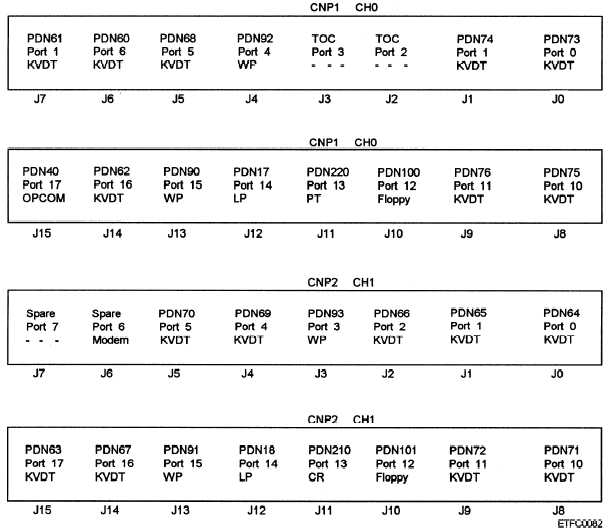Some arrangements include assigning multiple ports to
each channel (fig. 7-8).
Micros usually have only one pcb for their I/O
operations: the pcb has both a parallel and a serial port
(fig. 7-7). Some minis and micros have dedicated pcb’s
separate from the I/O pcb(s) to handle the interface for
the peripherals and displays. For micros, the
interfacing for the keyboard is usually located on the
I/O pcb.
INPUT/OUTPUT DATA ARRANGEMENT
The function of any I/O operation is to exchange
information between equipments. Regardless of the
techniques used to move the information, there are
consistencies in the architectures of the I/O sections
used by computers.
These consistencies include the
arrangement of the information exchanged and the
format of the information exchanged.
Arrangement
The types of information exchanged between the
computer and the external equipments frill into two
basic categories: data words and control words. The
length of the information exchanged varies with the
type of computer from 8-bit words to 32-bit words.
DATA WORDS.— Data words represent the
alphabetic and numeric information exchanged. Data
words are always thought of with the computer as the
reference point. Input data words are data entered in
the computer from equipments external to the computer.
Output data words are data sent out to the external
equipments from the computer. Some computers
transfer data words that include data and externally
specified addresses and index addresses.
CONTROL WORDS.— Control words specify an
action to be accomplished by an external equipment.
This might include an error or special condition of an
Figure 7-8.—Assigning multiple ports to a single channel.
7-8


